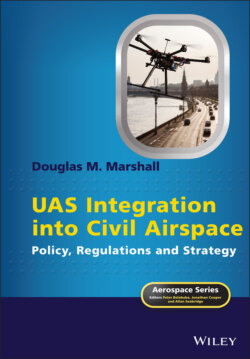Читать книгу UAS Integration into Civil Airspace - Douglas M. Marshall - Страница 11
Setting the Stage for Integration of Remotely Piloted Aircraft into Non-segregated Airspace
ОглавлениеLike the oceans, the world’s airspace is a public resource, owned by no one. Territorial waters adjacent to continents, islands, and land masses are controlled by the nations that claim sovereignty over the land contiguous to the oceans. International treaties such as the United Nations Conference on the Law of the Seas (UNCLOS) and United Nations Convention on the Law of the Seas (LCOS) establish the criteria for recognition and structure of national territorial waters, setting limits on the extent of those waters and economic zones. There are dozens of such treaties, conventions and instruments dealing with every conceivable aspect of human management of the world’s oceans. Disputes often arise about the interpretation of treaty language and there is a forum to resolve those disputes. “Peaceful settlement of international disputes occupies an important place in international law in general and the law of the sea is no exception” (Tanaka 2012). The same can be said for the treaties and conventions that deal with international airspace, specifically the Convention on International Civil Aviation (also known as the Chicago Convention of 1944), which created the International Civil Aviation Organization (ICAO). The similarity between the legal regimes of international and domestic airspace and the high seas (and coastal waters) bears examination, for many aviation regulations are derived from ancient maritime common law.
